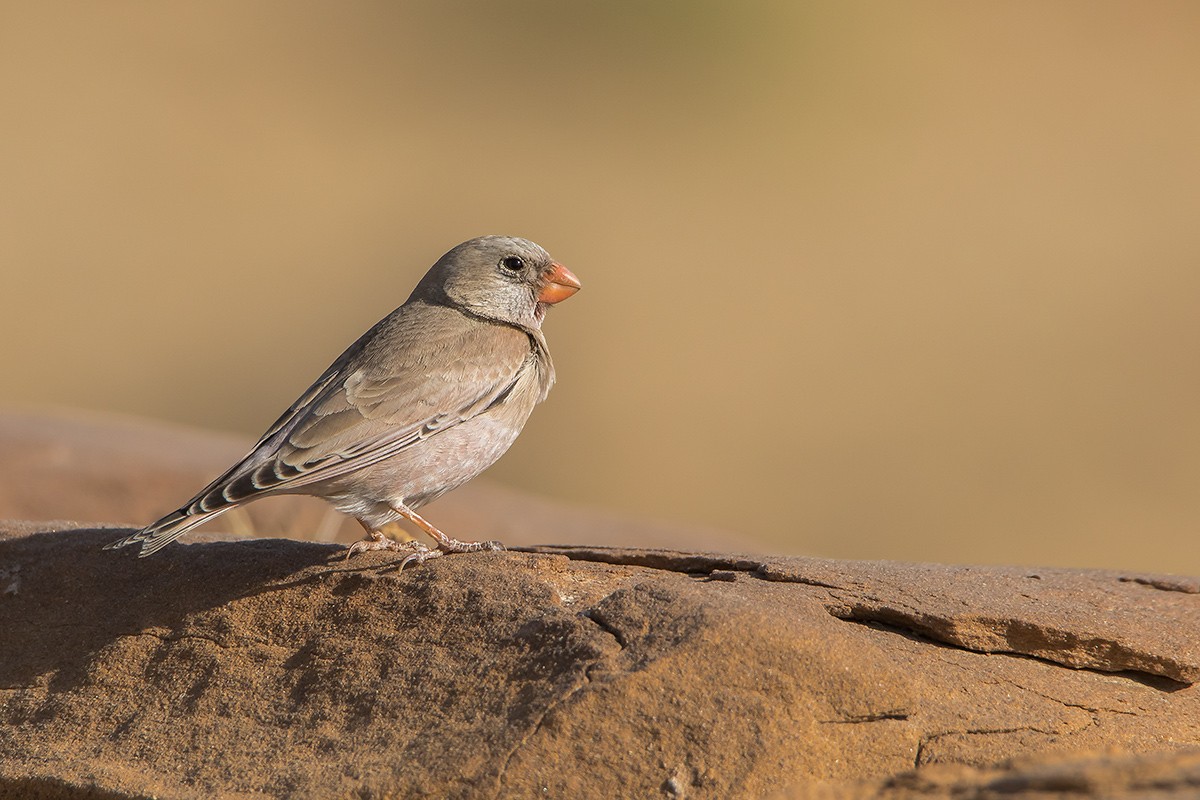Trumpeter Finch
A species of Trumpeter Finch and Mongolian Finch Scientific name : Bucanetes githagineus Genus : Trumpeter Finch and Mongolian Finch
Trumpeter Finch, A species of Trumpeter Finch and Mongolian Finch
Botanical name: Bucanetes githagineus
Genus: Trumpeter Finch and Mongolian Finch
Content
Description General Info
 Photo By Godbolemandar , used under CC-BY-SA-4.0 /Cropped and compressed from original
Photo By Godbolemandar , used under CC-BY-SA-4.0 /Cropped and compressed from original Description
The trumpeter finch is a small, long-winged bird. It has a large head and short, very thick bill. The summer male has a red bill, grey head and neck, and pale brown upper parts. The breast, rump and tail are pink, the last having dark terminal feathers. Winter males, females and young birds are a very washed-out version of the breeding male. The song of this bird is a buzzing nasal trill, like a tin trumpet. 
Size
15 cm
Nest Placement
Ground
Feeding Habits
Trumpeter Finch consumes primarily small seeds, plant shoots, and buds, augmented by insects and larvae, especially grasshoppers. It forages on the ground using a variety of movements, including running and hopping, occasionally digging in soil or picking from camel dung. Trumpeter Finch feeds alone, in pairs, or flocks, seeking water sources in the evenings.
Habitat
Trumpeter Finch thrive in arid to semi-arid regions, preferring environments like desert fringes, steppe areas, and mountainous terrains, including cliffs and gorges. Adaptability allows them to reside in human-modified locales such as agricultural lands. Typically found at elevations below 1700 meters, they can range up to 3000 meters and occasionally migrate to coastal zones during the non-breeding season.
Dite type
Granivorous
General Info
Feeding Habits
Bird food type
Distribution Area
The trumpeter finch breeds from the Canary Islands eastwards across North Africa, as far south as Mauritania, Mali and Chad, with isolated populations in Sudan and Ethiopia and Djibouti. In the middle east it is found in Egypt east to Iraq and south in the Arabian Peninsula to Yemen and Oman and north into Turkey and Armenia. In central Asia it ranges from Iran north to Kazakhstan and east to India. It has colonised southern Spain where breeding was first proved in 1971. There are four recognised subspecies: B. g. amantum - (Hartert, 1903) - the Canary Islands B. g. zedlitzi - (Neumann, 1907) - North Africa and southeastern Spain B. g. githagineus (Lichtenstein, MHK, 1823) - Egypt and Sudan B. g. crassirostris (Blyth, 1847) - from Turkey and the Sinai Peninsula in the west east through the Middle East and Central Asia to Rajasthan and Haryana in India. It has been recorded as a vagrant in Great Britain with the first records there both occurring in 1971 in Suffolk and in Sutherland, Channel Island, Denmark, Sweden Germany and Austria. It is possibly a regular migrant in southern Europe away from Spain with records of flocks from Italy and Malta. There was a population in the Algarve in Portugal which originated from escaped cage birds. In the summer of 2005 there was a notable irruption of this species into northwestern Europe, with several birds reaching as far as England. 
Species Status
Not globally threatened.